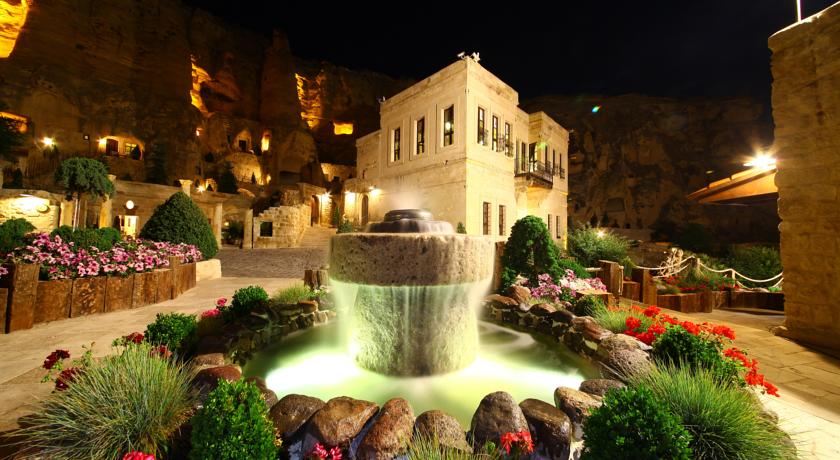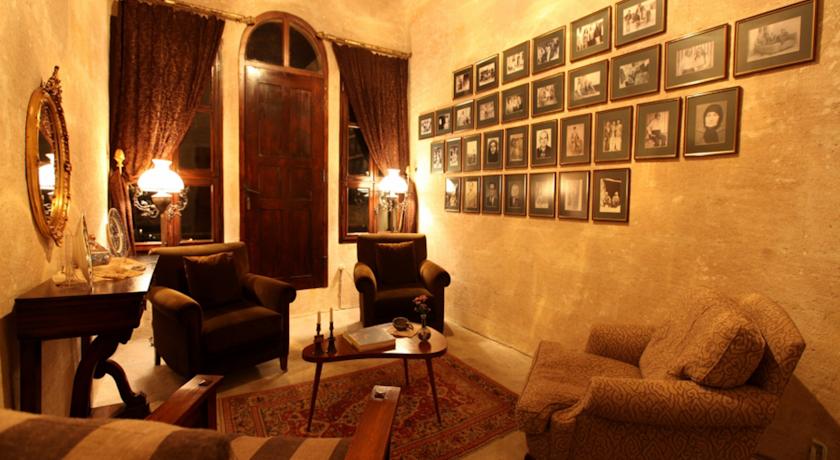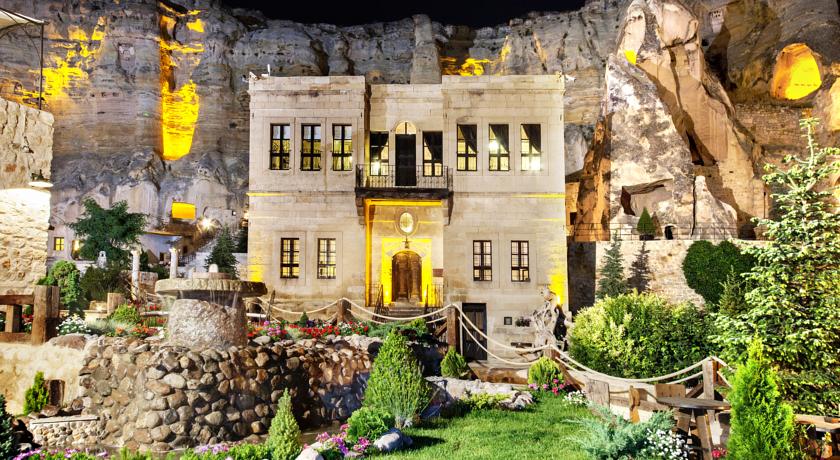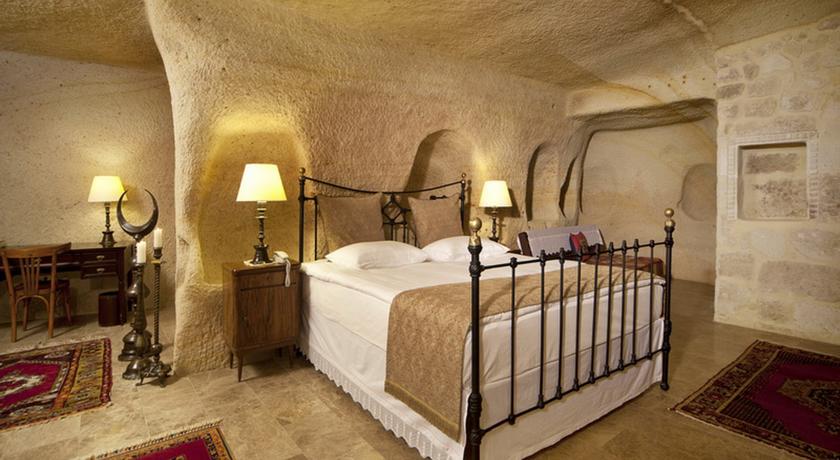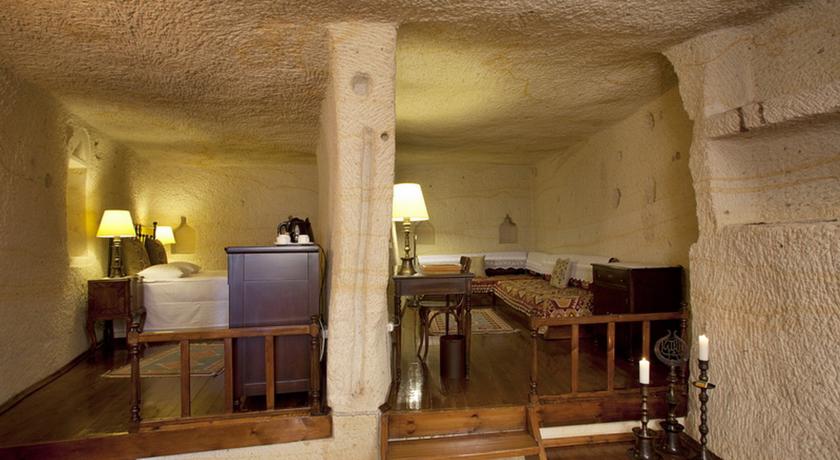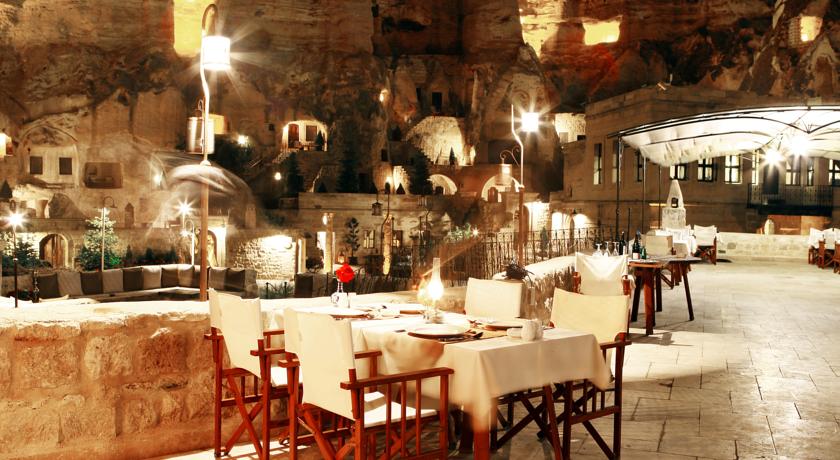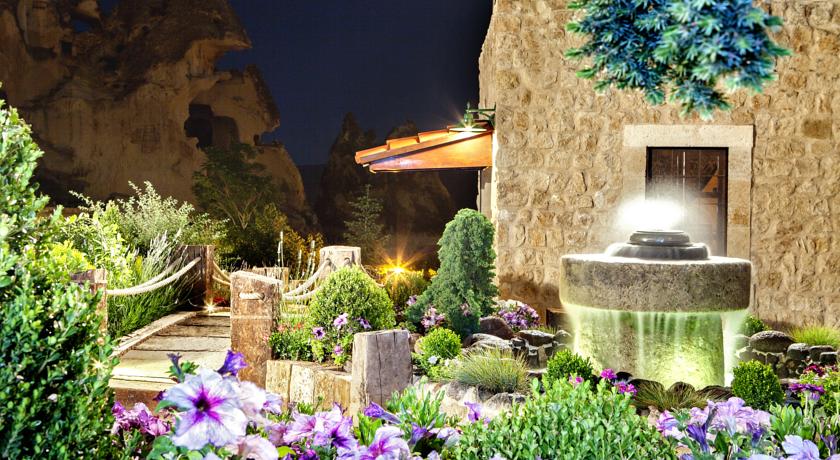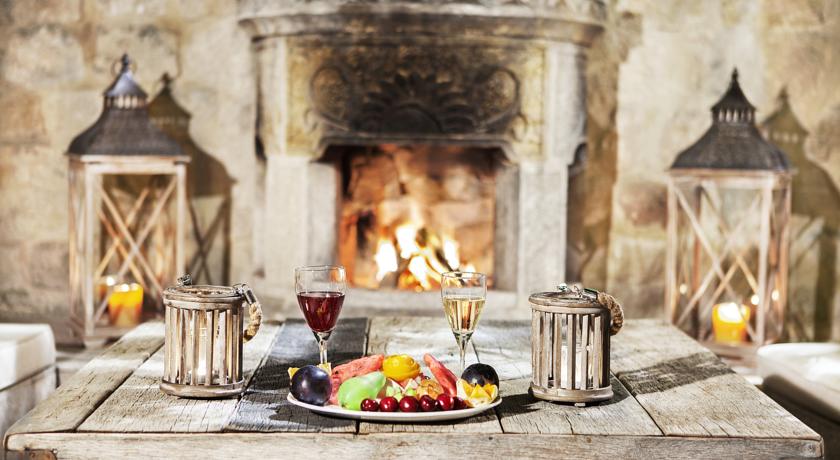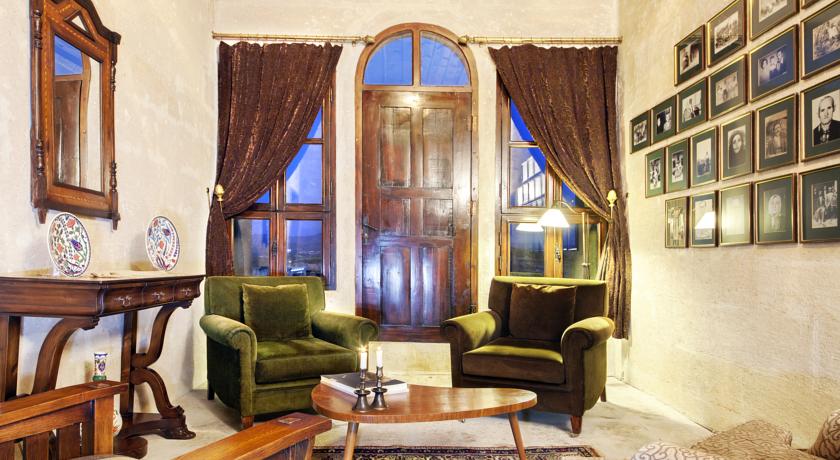Availability
General
Set in Cappadocia’s landscape of fairy chimneys, Yunak Evleri is a unique cave hotel carved into a mountain cliff. It offers rooms dating back to the 5th century and a 19th-century Greek mansion.
Rooms at Yunak Evleri feature warm hardwood floors, traditional carpets and handcrafted furniture. Each has its own spacious marble bathroom with amenities. Some include a jacuzzi.
The on-site library offers books about Cappadocia and Turkey. Guests can also enjoy a large collection of jazz and classical CDs or watch a movie on a wide-screen TV in the old mansion.
The attentive staff offers personal advice on the nearby attractions including Cappadocia’s underground cities and hidden cavernous churches. The hotel also organizes regular and private tours with professional tour guides.
Check-in time
Check-out time
Cancellation / Prepayment
Children and extra beds
Pets
Accepted credit cards
Internet
Parking
We are sorry, there are no reviews yet for this accommodation.
Cappadocia
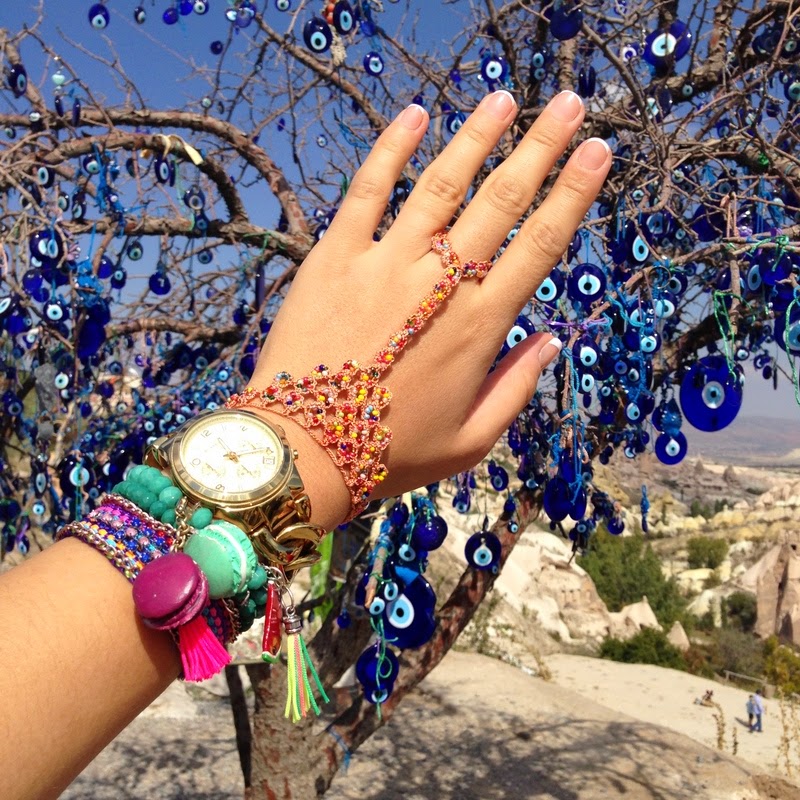
Thousands of years of wind and rain erosion on a landscape of soft volcanic stone topped with hardened larva caps has created a fascinating landscape of rock cones and pinnacles that are known as “fairy chimneys”. The Valley of Fairy Chimneys is the most popular area, roughly within the triangle formed by the three main towns of the region, Avanos, Urgup and the main transport hub of Nevsehir. Outside the triangle to the south are the remarkable underground cities of Derinkuyu and Kaymakli where layers of tunnels and an intricate system of caves hid generations of settlers and sheltered early Christians fleeing persecution. The Ilhara Canyon is another religious hideaway with more than 100 painted churches and about 4, 000 dwellings carved into the rock walls or concealed within the cliffs; its river bed and lush vegetation stand in stark contrast to the dusty, seemingly barren land above. Cave dwellings, ancient monasteries and painted chapels are well camouflaged with entranceways that are barely noticeable among a landscape of perforated cliff walls and rock fissures. Houses of volcanic stone blend unobtrusively into the natural surroundings, pigmented in natural shades of ochre and yellow, to pinks, greys and greens and many people still inhabit the cones and chimney formations. In tourist towns such as Goreme, delightful little hotels and pensions are built partially into the rock or are housed within a rock cone and offer cave-style rooms.
A RICH HISTORY STILL VISIBLE TODAY The area is a popular tourist destination, little wonder as it has many areas with unique geological, historic and cultural features and flights to both Ankara and Istanbul. Hot-air ballooning is very popular in Cappadocia and is available in Goreme. Trekking is also enjoyed in Ihlara Valley, Monestry Valley (Guzelyurt), Urgup and Goreme. Sedimentary rocks formed in lakes and streams and ignimbrite deposits that erupted from ancient volcanoes approximately 9 to 3 million years ago, during the late Miocene to Pliocene epochs, underlie the Cappadocia region. The rocks of Cappadocia near Goreme eroded into hundreds of spectacular pillars and minaret-like forms. People of the villages at the heart of the Cappadocia Region carved out houses, churches and monasteries from the soft rocks of volcanic deposits. The Valleys all illustrate this history and can still be seen and enjoyed today. The Goreme Open Air Museum is the most visited site of the monastic communities in Cappadocia and is one of the most famous sites in central Turkey. The complex contains more than 30 carved-from-rock churches and chapels, some having superb frescoes inside, dating from the ninth century to the eleventh century.
CAPPADOCIA CLIMATE AND WEATHER Cappadocia has a continental climate characterised by hot dry summers and cold snowy winters. Rainfall is sparse and the region is largely semi-arid to arid. April to June and September to October are the best months to visit Cappadocia. There is a sharp difference in the temperature between day and night and it is not uncommon to have freezing cold nights interspersed with scorching hot days. The average temperature during the summer months is 230C (730F) while winter’s average is much lower at -20C (280F). Cappadocia is much cooler and drier than its Mediterranean and Aegean counterparts
Read more

